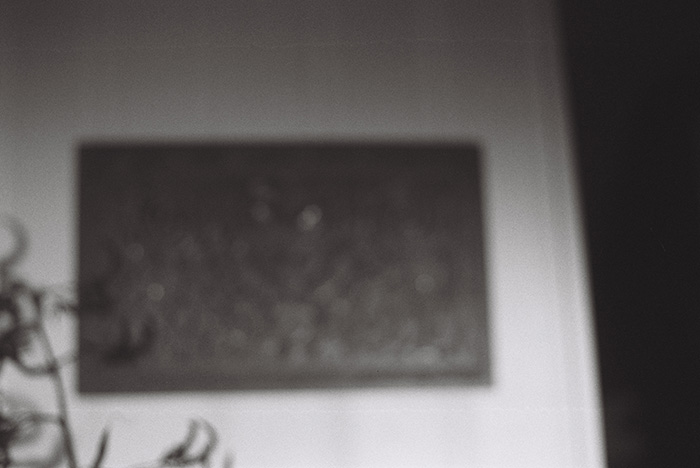Balamohan Shingade

Photo by James Tapsell-Kururangi, 2019.
This was the invitation to artists and others for an exhibition at St Paul St Gallery from July 12th to October 18th last year: Let us inhabit How to Live Together as an ongoing enquiry, and this exhibition as a scene or a course guided by the coupled question, ‘What is the intimacy we must develop to create a community? What is the distance we must maintain to retain our solitude?’
For the duration of the exhibition, artist James Tapsell-Kururangi (TK) was living in the home of his late grandmother Helen Jean Linton in Rotorua. It was a place with a lifetime of Ms. Linton’s effects. TK hesitated to change the order of things: He reshelved linen in the way she had in the linen cupboard, he relearnt the use of her cookware, and when her clock stopped ticking, he wondered whether it would be appropriate to replace its batteries.
For TK, all of life became encompassed in the idea of art, which made possible his return to his hometown Rotorua, and it made palatable working at the Rotorua City Council. The emphasis for art shifted from the study and materialisation of knowledge and the making of things, to the practice of art as a study of being and becoming. TK reframed the question for art from ‘what to do?’ to ‘how to be?’
You’re not supposed to make art about —. It was a year spent living. […] I do not want to aestheticise her or my life and family as —. I do want to ask: Can a year living at my grandmother’s house be an artwork?[1]
His duty of care was foremostly to his family, especially his grandmother. For the casual visitor to St Paul St Gallery in Tāmaki Makaurau Auckland, any experience of TK’s work was determined by the intimacies or distances between the artist and the visitor. For most visitors, it remained a rumour accompanied by text in the exhibition guide. If visitors asked the gallery guides for more information, it was only then that a visit to Rotorua and a friendship with TK was possible to be opened up. Living with My Grandmother for One Year was a work about relational commitment – between TK and his grandmother, between us at St Paul St Gallery and TK, and between the visitors to the exhibition and Helen Jean Linton in Rotorua. In this way, the visitors’ perspectives became uneven, partial, and inconsistent, especially because what exactly the artwork was was not defined and contained a priori. Rather than an object within the gallery space for consumption or contemplation, it was an experience to be lived through.
[1] James Tapsell-Kururangi, ‘Gains? Grandmother. Grey Street.’ As Needed, As Possible, ed. Sophie Davis and Simon Gennard (Wellington: Enjoy Gallery, April 2020), 3. https://enjoy.org.nz/publishing/other/as-needed-as-possible/gains-grandmother-grey-street#article
Balamohan Shingade is a candidate for the MLitt in Philosophy at the University of Auckland. From 2017–20, he was the Assistant Director of St Paul St Gallery, Auckland University of Technology. During the redevelopment of Uxbridge Arts and Culture, he was the inaugural Manager/Curator of Malcolm Smith Gallery, a new gallery for East Auckland, 2015–16. He is a Masters graduate of Elam School of Fine Arts, where he was formerly employed as a Teaching Fellow, 2013–15. He is also an occasional performer of Indian classical music.
James Tapsell-Kururangi (Te Arawa, Ngāti Whakaue, Ngāti Pikiao, Ngāti Mākino, Tainui, Ngāti Raukawa, Ngāti Porou, Te Whānau-a-Rākairoa) is the current curatorial intern for Te Tuhi. He runs Papatūnga in Tāmaki Makaurau. James graduated from Massey University with a Master of Fine Arts (First Class Honours) in 2019. He graduated with a Bachelor of Design (First Class Honours) specialising in photography in 2017. James is an emerging artist and writer; he has exhibited at ST PAUL St Gallery as part of the group exhibition How to live together (2019). His writing has been published with Lieu Journal and the Pantograph Punch.